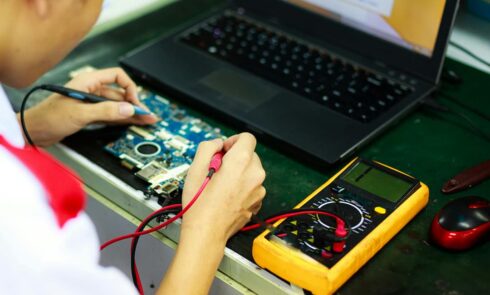As the global electronics industry transitions away from traditional lead-containing materials, NASA has faced the challenge of adopting lead-free soldering techniques while maintaining the high reliability required for space missions. The SAMPSON (Solder Alloy Material Properties and Strength Over NASA Needs) program is NASA’s response to understanding and overcoming the unique challenges posed by lead-free electronics in extreme aerospace environments.
The Need for Lead-Free Solutions
The push for lead-free electronics stems from global regulations like the European Union’s Restriction of Hazardous Substances (RoHS) directive, which mandates the reduction or elimination of lead in electronic devices. While commercial industries have made significant strides in lead-free adoption, space applications present unique challenges:
- Extreme Temperatures: Electronics aboard spacecraft must function in environments ranging from deep space cold to the intense heat of re-entry.
- Vibration and Mechanical Stress: Space missions involve significant mechanical stresses during launch, orbit, and landing.
- Long Mission Lifespans: Spacecraft and satellites often operate for decades without the possibility of repair or replacement.
For NASA, the reliability of solder joints is critical, making the transition to lead-free materials a complex task.
SAMPSON’s Objectives
The SAMPSON program was designed to:
- Evaluate Lead-Free Alloys: Identify suitable lead-free solder materials for high-reliability aerospace applications.
- Assess Long-Term Reliability: Study the effects of thermal cycling, mechanical stress, and aging on lead-free solder joints.
- Develop New Standards: Create guidelines for the use of lead-free soldering processes in aerospace electronics manufacturing.
- Collaborate with Industry: Partner with manufacturers, researchers, and government agencies to share insights and drive innovation in lead-free solutions.
Research and Testing
Under SAMPSON, NASA has conducted extensive testing to evaluate the performance of lead-free solder alloys. Key research areas include:
1. Alloy Selection
NASA has focused on alloys such as Tin-Silver-Copper (SAC) and Tin-Bismuth (Sn-Bi) for their promising mechanical and thermal properties. However, the unique stresses of spaceflight have led to modifications and hybrid solutions tailored for space applications.
2. Thermal Cycling Tests
Spacecraft electronics endure repeated exposure to extreme temperature changes. NASA’s testing simulates these cycles to observe how lead-free solder joints perform under thermal expansion and contraction.
3. Vibration and Shock Resistance
The intense vibrations of rocket launches can weaken solder joints. SAMPSON evaluates the resilience of lead-free solders against mechanical stress to ensure mission-critical electronics remain intact.
4. Corrosion and Oxidation
Lead-free solders are more prone to oxidation, which can degrade solder joints over time. NASA examines ways to mitigate oxidation through protective coatings and optimized flux chemistries.
Challenges and Findings
The SAMPSON program has highlighted several challenges in adopting lead-free materials for aerospace:
- Higher Melting Points: Lead-free solders generally have higher melting points than traditional tin-lead alloys, requiring adjustments in manufacturing processes and reflow profiles.
- Brittle Intermetallic Layers: Lead-free alloys tend to form intermetallic compounds that can compromise joint strength, particularly under mechanical stress.
- Creep Resistance: Extended exposure to high temperatures can cause lead-free solder joints to deform, raising concerns for long-term reliability.
Despite these challenges, NASA has made significant progress in identifying lead-free materials that meet the stringent demands of spaceflight.
Collaboration and Future Directions
NASA recognizes that the transition to lead-free electronics cannot be achieved in isolation. Through SAMPSON, NASA collaborates with industry leaders, academic researchers, and other government agencies to share findings and develop best practices.
Future research under SAMPSON will focus on:
- Advanced lead-free solder formulations with enhanced mechanical and thermal properties.
- Additive manufacturing techniques for lead-free components.
- Standardization efforts to ensure compatibility and reliability across the aerospace industry.
NASA’s SAMPSON program exemplifies the organization’s commitment to innovation and sustainability in electronics manufacturing. By addressing the challenges of lead-free soldering through rigorous research and collaboration, NASA is paving the way for more environmentally friendly and reliable aerospace technologies. As the industry continues to evolve, SAMPSON serves as a beacon for how to navigate the complexities of lead-free adoption in high-reliability applications.


